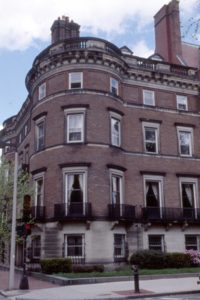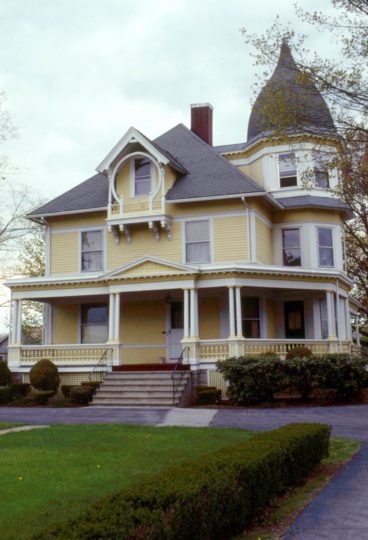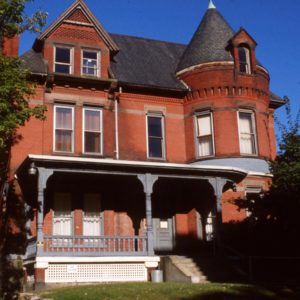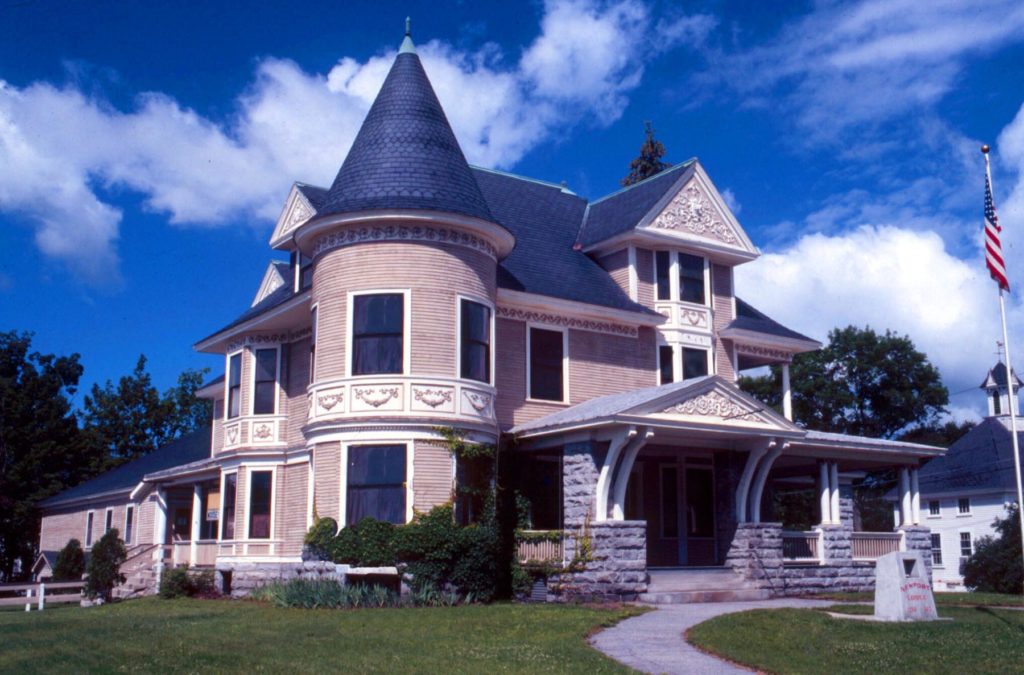Inspiration for the Queen Anne derived from the English buildings erected at the Philadelphia Exposition of 1876 which were based on 16th century sources. As the style matured in America, English Gothic/Renaissance designs were replaced by Colonial Revival elements. The style is found almost everywhere.
Popular at the end of the 19th century, the Queen Anne style retains the picturesque massing and asymmetry of the Victorian styles that preceded it, but in decorative detail it anticipates the Colonial Revival which would become important in the opening years of the 20th century. It is the only major style that intentionally mixes the Classical and Gothic architectural elements.

Queen Anne houses employ a variety of materials; it is not unusual to see stone, brick, clapboard and shingles on a single building. Color schemes are even more varied. Examples built before circa 1900 will often have a round off-center tower with a wrap-around porch at the first floor, as well as gables and dormers on each facade. After circa 1900, the tower is generally omitted, the roof line is lower and the facade shows more formal balance. Colonial Revival detailing is much more in evidence, especially on porches, entrances and cornices. But on all Queen Anne houses, roof shapes are complex. Cross gables with several dormers and chimneys are not uncommon.



Inspiration for the Queen Anne derived from the English buildings erected at the Philadelphia Exposition of 1876 which were based on 16th century sources. As the style matured in America, English Gothic/Renaissance designs were replaced by Colonial Revival elements. The style is found almost everywhere.
From Our Trusted Partners
Featured property



